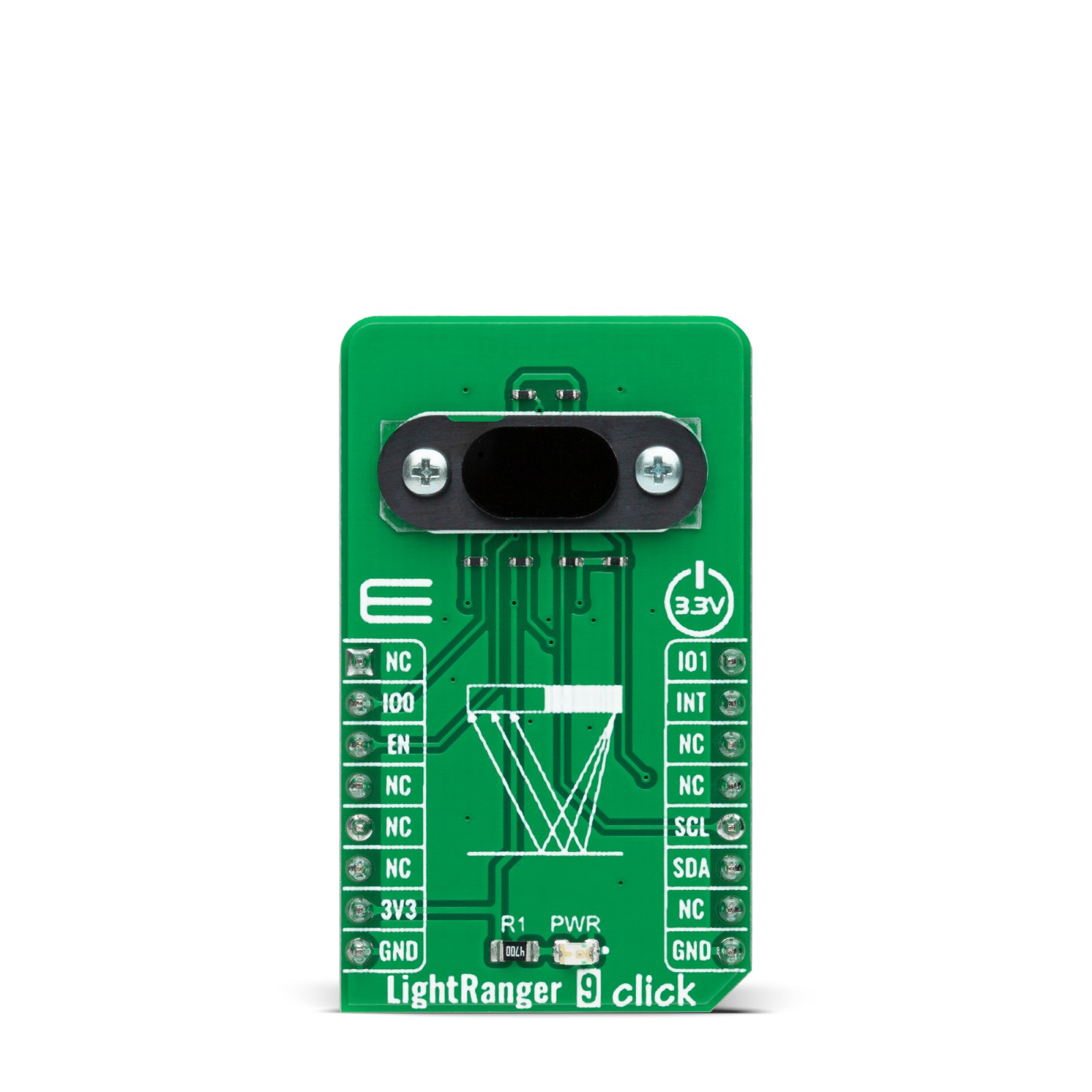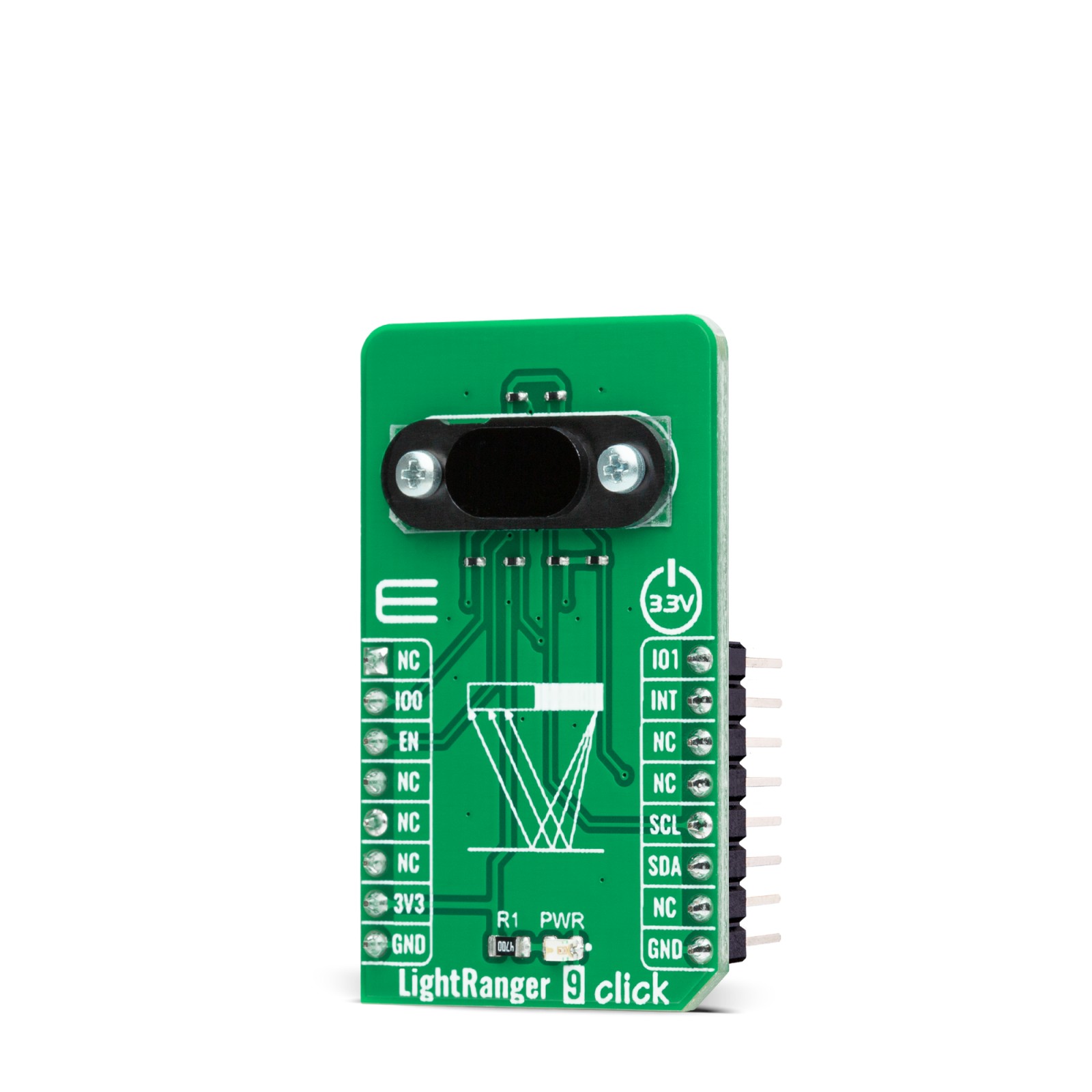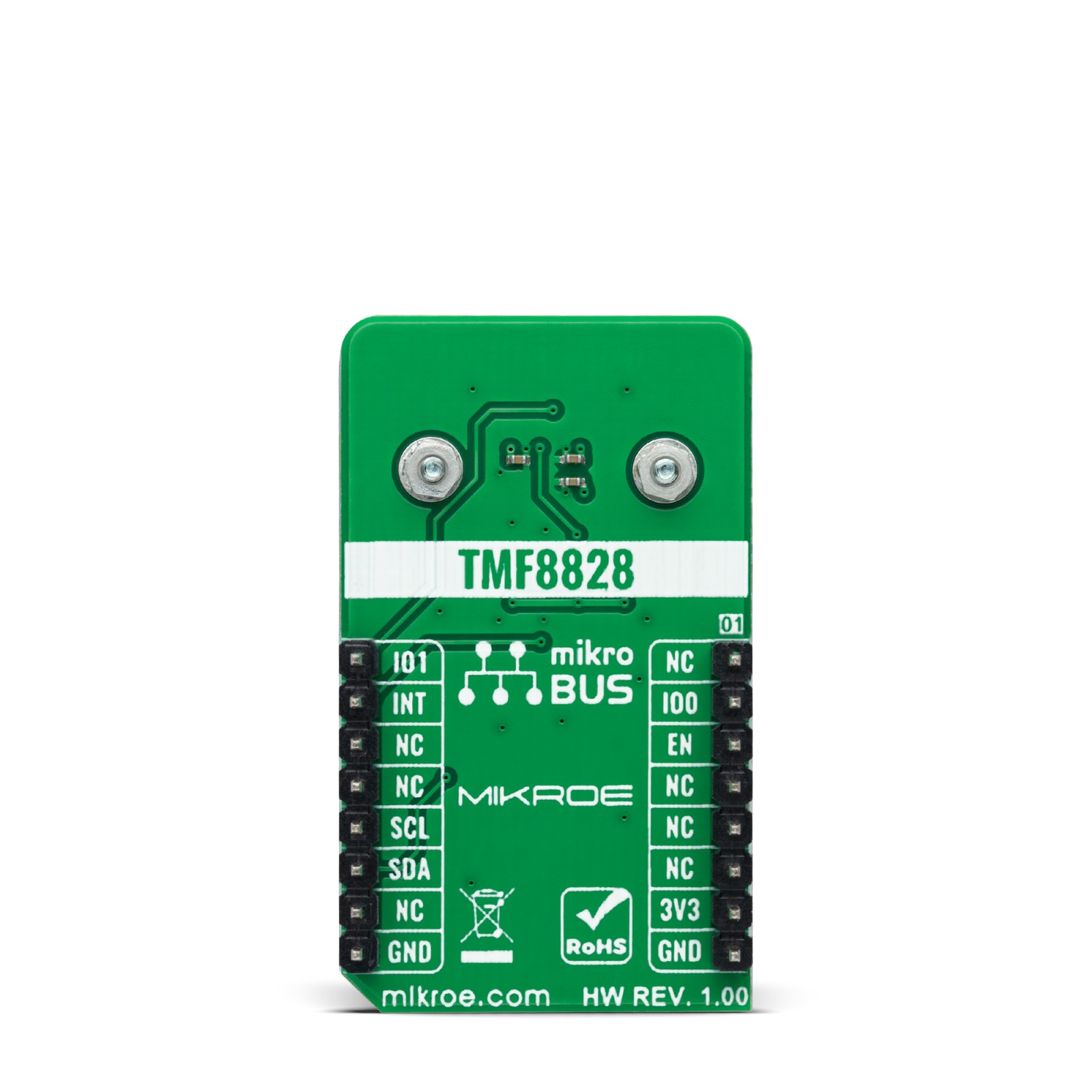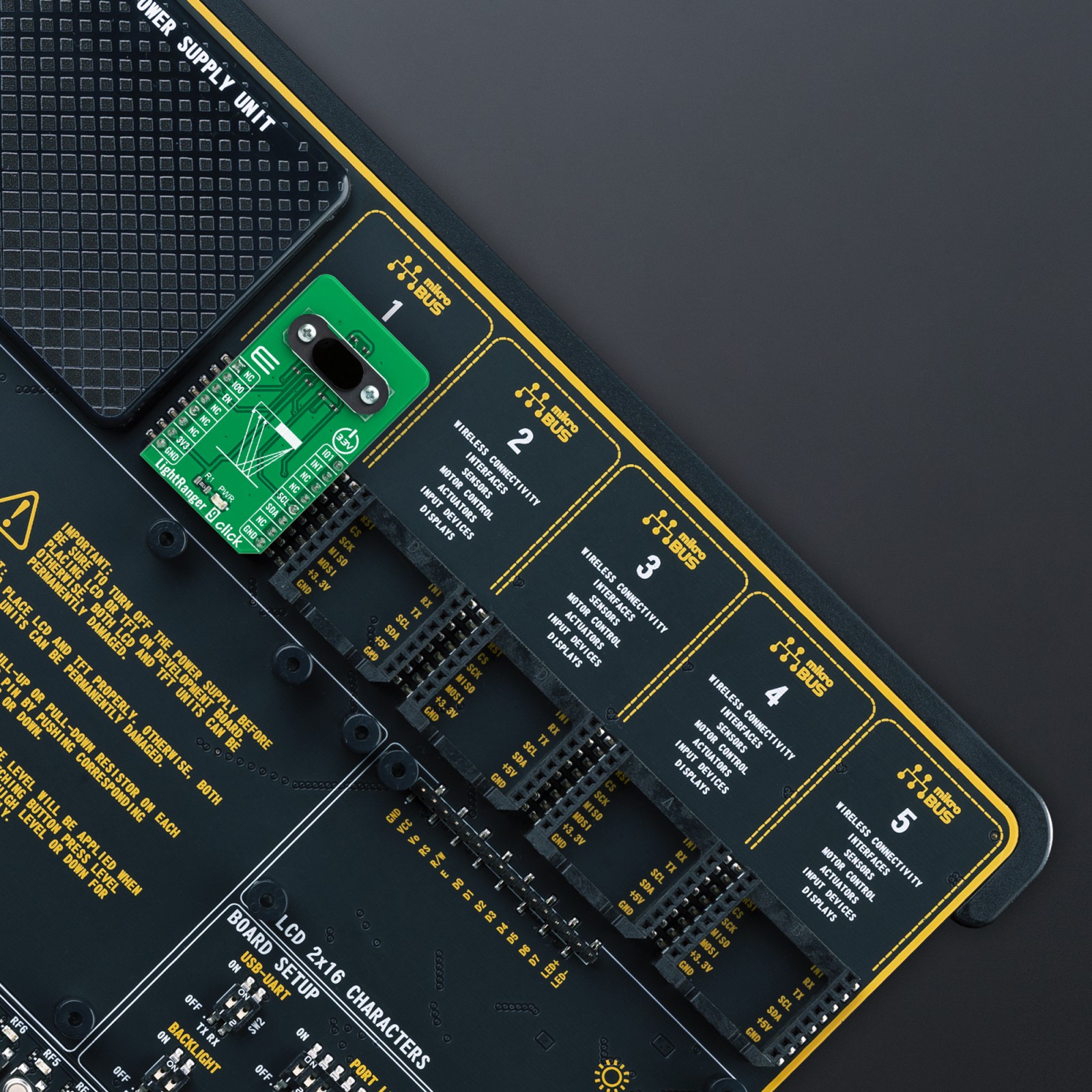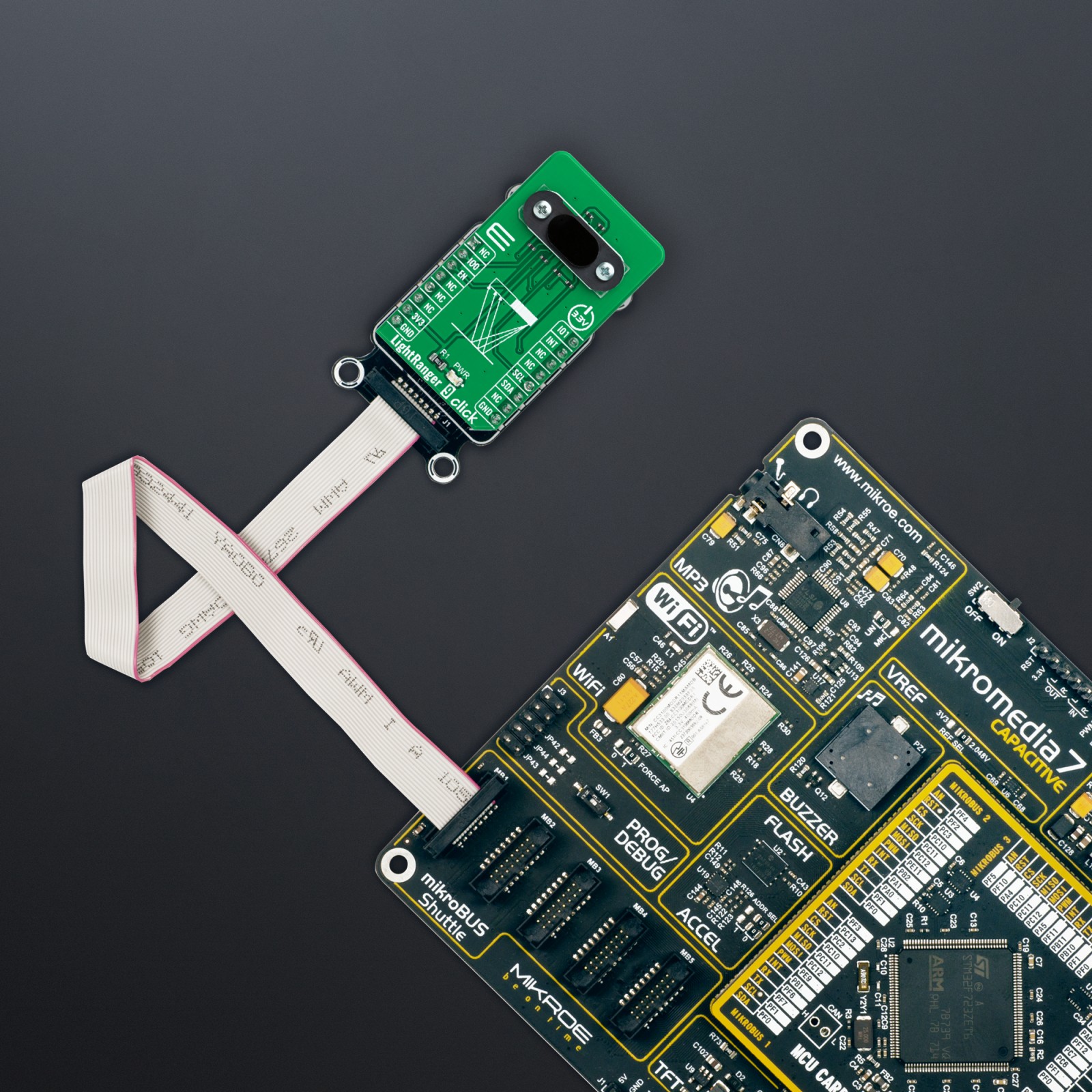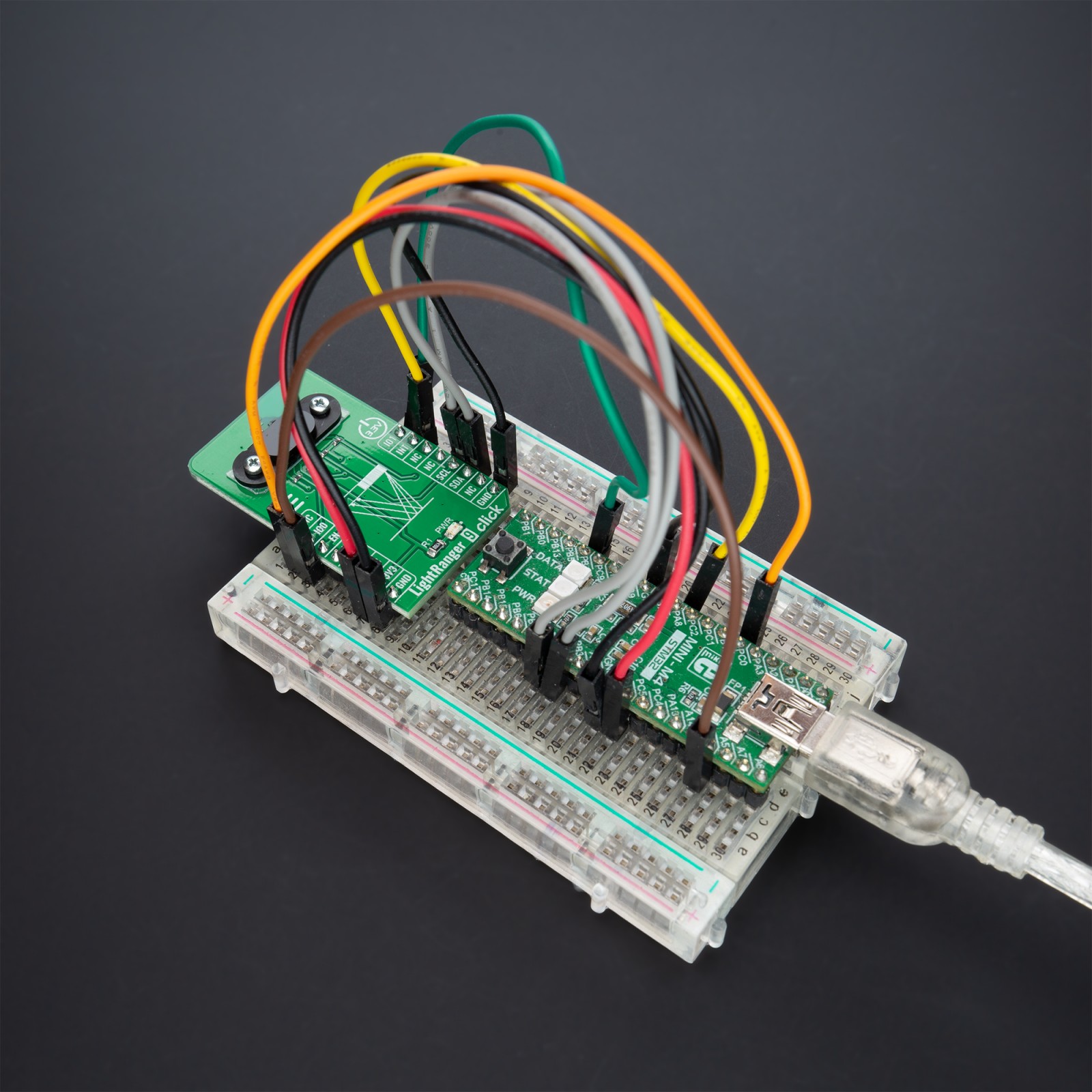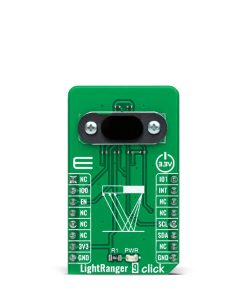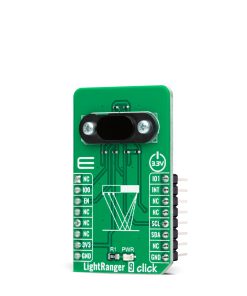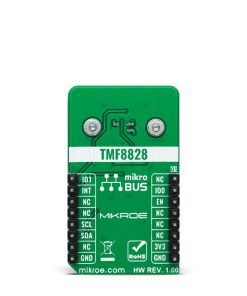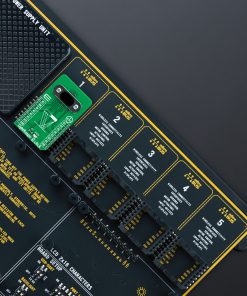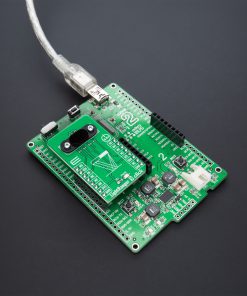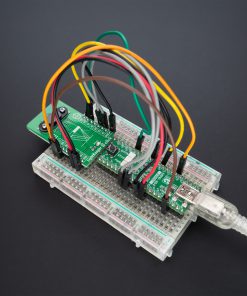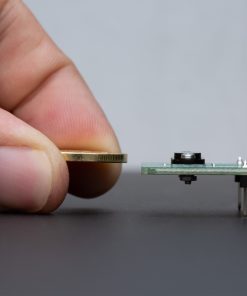LightRanger 9 Click
R455.00 ex. VAT
LightRanger 9 Click is a compact add-on board suitable for range-finding and distance sensing applications. This board features the TMF8828, a dToF (direct time of flight) optical distance sensor with an integrated Vertical Cavity Surface Emitting Laser (VCSEL) achieving up to 5m target detection distance from ams AG. Due to its lens on the SPAD, it supports 3×3, 4×4, 3×6, and 8×8 multizone output data and a wide, dynamically adjustable field of view. All raw data processing is performed inside the TMF8828, providing distance information and confidence values through its I2C interface. A unique addition to this Click board™ represents an additional 0.7mm thick protective lens that further reduces interference and improves the sensor’s accuracy. This Click board™ is suitable for presence (object) detection, distance measurement, industrial ranging, inventory control, and many other applications.
LightRanger 9 Click is supported by a mikroSDK compliant library, which includes functions that simplify software development. This Click board™ comes as a fully tested product, ready to be used on a system equipped with the mikroBUS™ socket.
Stock: Lead-time applicable.
| 5+ | R432.25 |
| 10+ | R409.50 |
| 15+ | R386.75 |
| 20+ | R372.19 |

